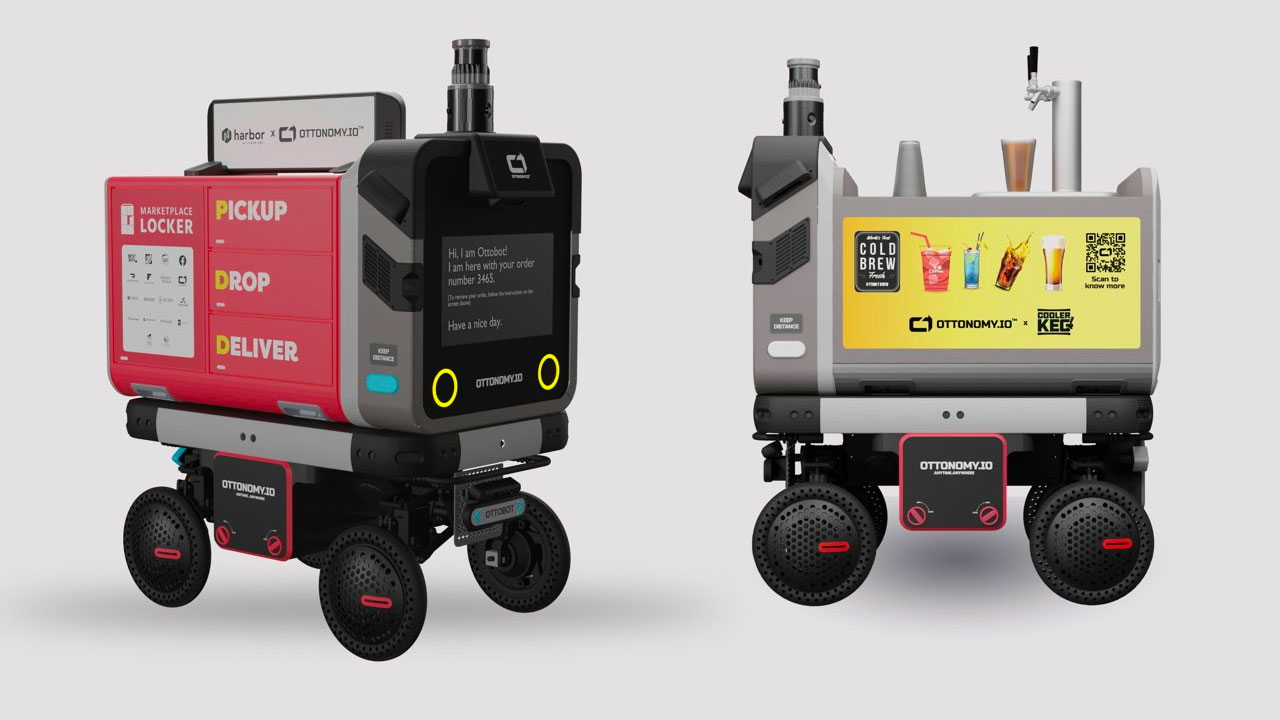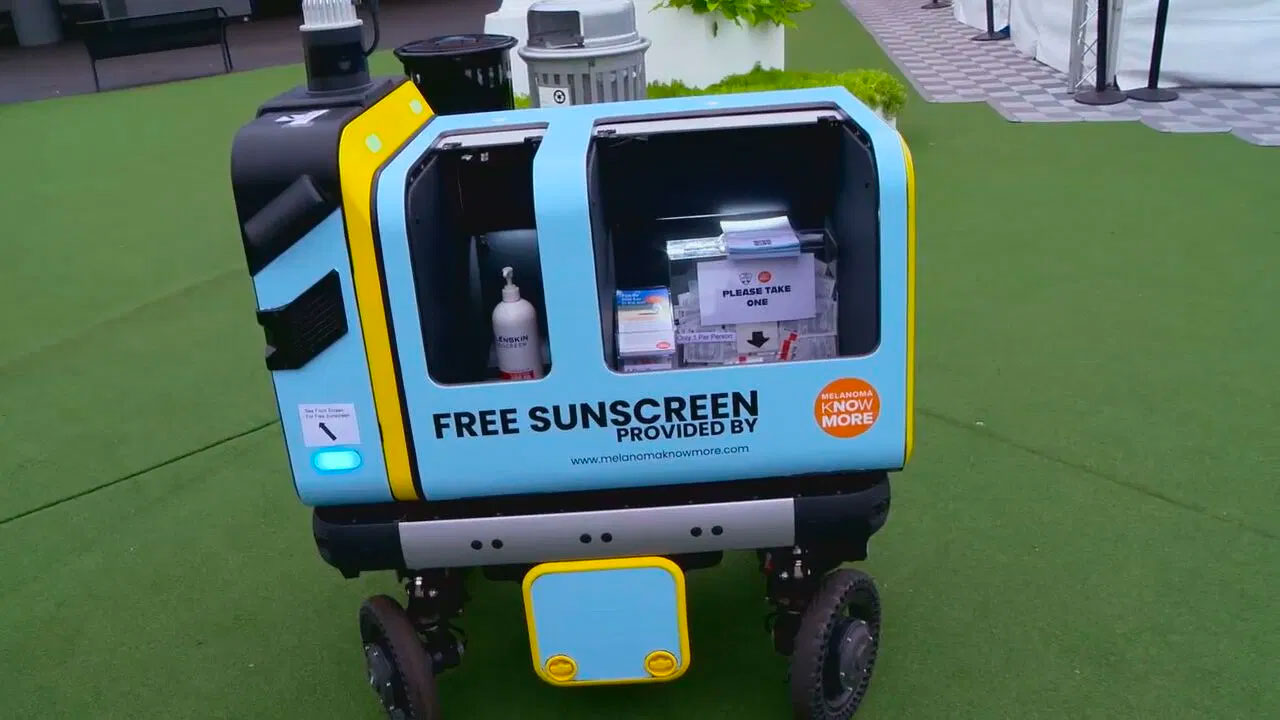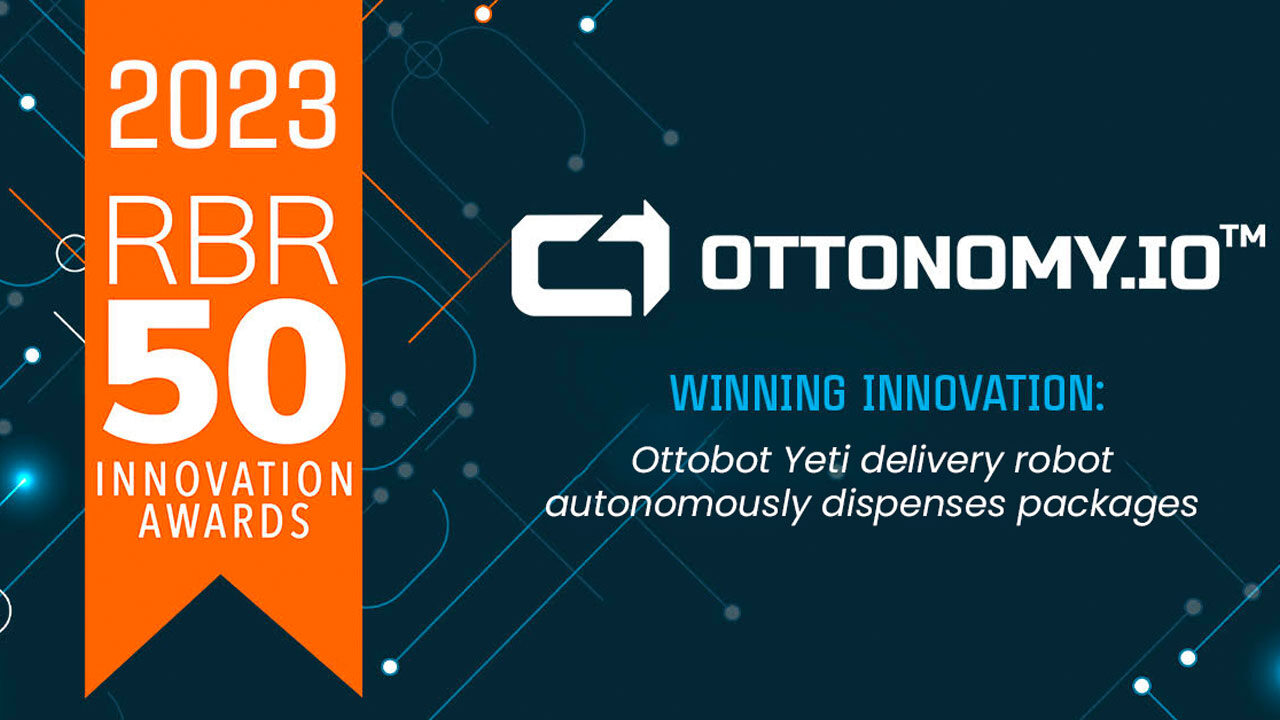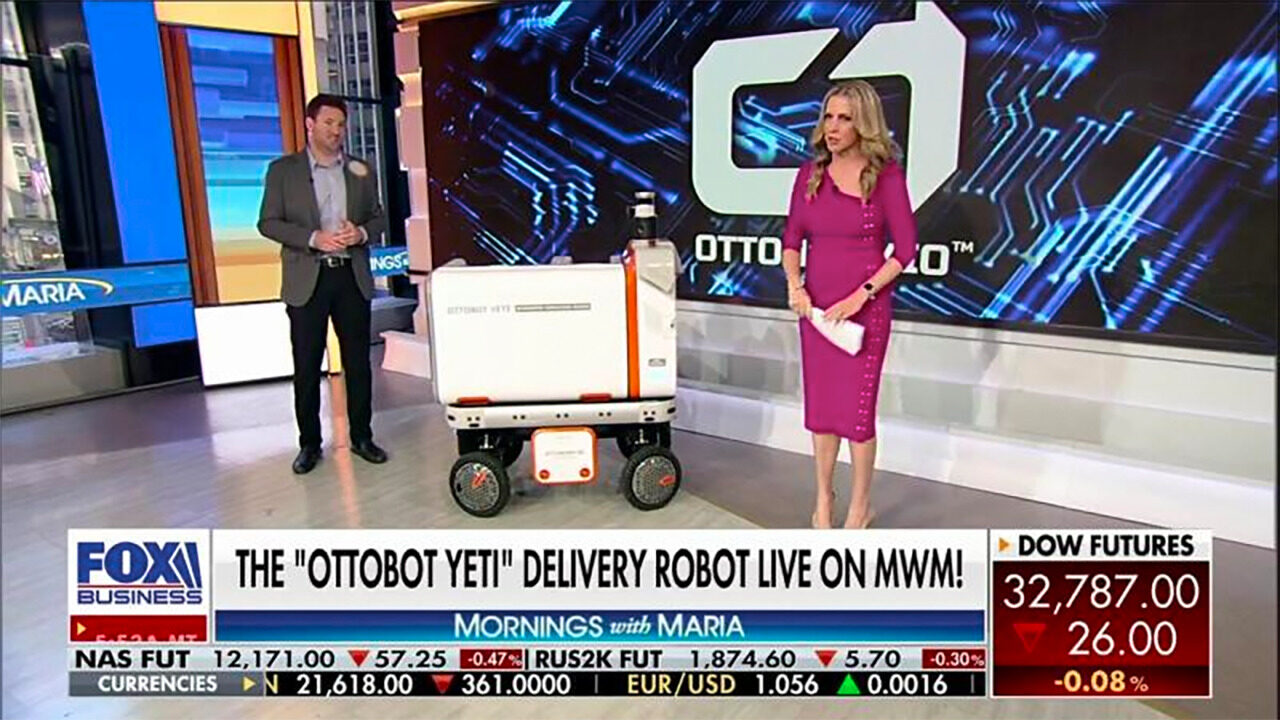Checking order status: Cincinnati Airport’s robotic food delivery

Cincinnati Airport has new robotic team members providing passengers with a food and retail delivery service. Frankie Youd speaks to the robot’s manufacturer, Ottonomy, to find out more about these new robotic workers and the benefits that they bring to the airport.
Social distancing, sanitation, and reduced human interaction within retail environments seem to be the new way of life moving forward from the Covid-19 pandemic.
With this in mind, airports worldwide have implemented a number of contactless solutions, such as biometric facial scanning and contactless boarding systems to reduce the need for human-to-human contact.
Paired with this new technology, others have been turning to help from a variety of service robots.
Launching as a world first, a fleet of fully autonomous delivery robots have been dispatched at Cincinnati/Northern Kentucky International Airport. Named ‘Ottobots’, the robots provide passengers with the ability to complete contactless orders for food and retail within the airport.
Your order is on the way
The introduction of these robots allows passengers waiting at the airport to order food, beverages, and lifestyle products without the need to walk around the airport and queueing at various retailers.
Once a passenger has successfully made it through the airport security checks, they will be able to access the passenger lounges and terminal areas where specific QR codes have been placed. Upon scanning these codes, passengers can access a web ordering option, allowing them to select items and products from a food and retail menu to be delivered to their boarding gate.
Once an order is placed, passengers will be advised on an expected time of arrival and where the delivery will occur, depending on where the passenger is waiting – for example, at their boarding gate or in the lounge area. When the robot receives the notification that an order has been placed, the staff at the corresponding restaurant or retailer receives a unique QR code. This code is then scanned, and the package is placed inside the robot.
The robot then starts its journey to the selected collection point that the passenger has selected. During this time the passenger will also receive a notification that the robot is on its way for delivery.
Autonomous nature
One of the most noticeable and impressive elements of these robots is their autonomous ability, making them a world first for an airport environment.
The robots have been equipped with 2D lasers, seven to eight cameras, and safety sensors to ensure safety to the robots themselves as well as passengers within the airport.
Alongside this, the company has created a digital twin of the entire airport environment to allow for the autonomous nature to take place.
Ritukar Vijay, founder and CEO of Ottonomy explains: “For the robots, we created a digital twin of the entire airport environment, this allows them to navigate within the map.
“That helps us to be autonomous, both from an indoor space and outdoor. The robots’ positioning doesn’t depend on the GPS at all, which makes a huge difference. We have something that is called contextual navigation.
“We can contextualise the navigation aspect within crowded environments and dynamic scenarios where kids, elderly passengers, people in a hurry to catch the flight, all sorts of situations, can happen. Then, the robots’ behaviour can adapt according to that. That is key for the autonomous ability of the robot.”
Lending a helping hand
As mentioned previously, one of the key benefits of robotic solutions is minimising the human-to-human contact that passengers will experience within an airport environment. This is not only a benefit when looking at customer confidence, but also when it comes to mitigating the spread of Covid-19 within the airport.
Alongside the reduced contact, the robot also helps to assist with another key issue that US airports are facing: staff shortages.
The ongoing staff shortage that the US is currently facing is also impacting airports. Passengers want more options when it comes to airport retail and food, but these retailers and restaurants are struggling to meet demand due to limited staff.
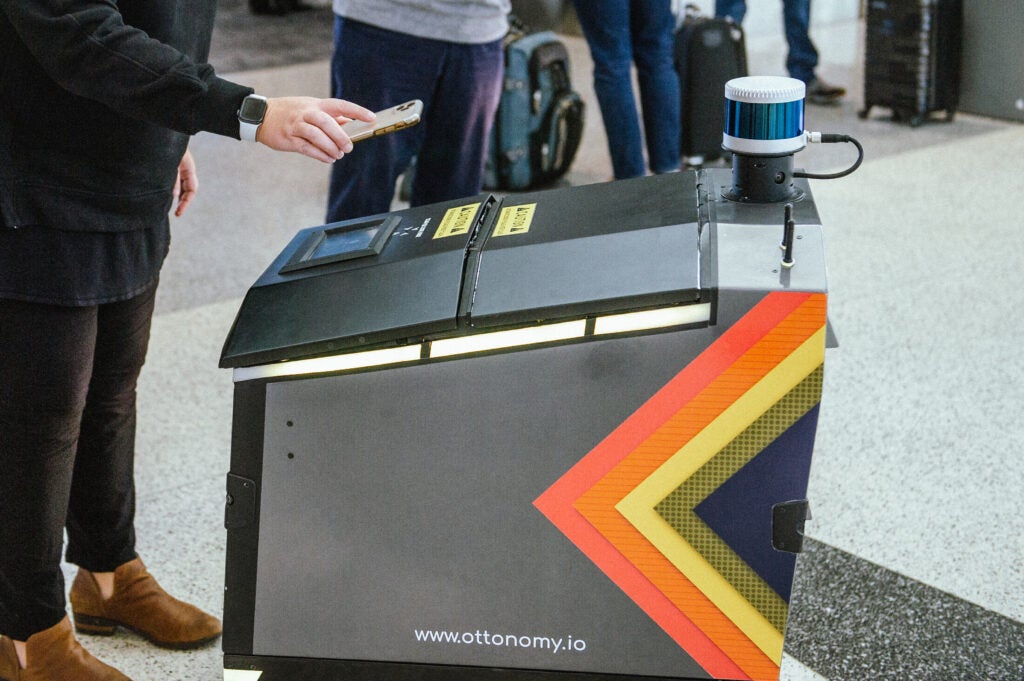
“The airport space is very, very difficult to hire people into because they need to have background and security checks for up to five to ten years in order to have a position that is post security,” Vijay explains.
“Everybody’s struggling, the customers are not getting the type of experience that they want, and the enterprise customers – such as retailers and restaurants – are not able to fulfil that demand.”
Targeting gate huggers, increasing revenue
Paired with these benefits, the introduction of the Ottobots also assists the airport industry when it comes to tackling a specific group of passengers: ‘gate huggers’. These individuals have been labelled as such due to the nature of their behaviour in the airport while awaiting their flight.
A typical ‘gate hugger’, after security checks have been carried out, will make their way to the departure gate and wait in that area on their phone, laptop, or tablet, rather than venturing around the airport. Airports are keen to engage with these types of passengers, as they are a lost demographic when it comes to airport retail.
Vijay expands: “This type of customer is very important for the airport to convert or to engage with, in any retail activity, because the airport is missing out a potential customer. Converting these gate huggers, was already identified by airports.”
“Multiple airports were trying to entice them, to engage them. But the pandemic increased the number of gate huggers because now people actually create a cocoon around themselves and then just stay in those cocoons. They don’t want to queue up or wait for their orders and things like that.”
The introduction of the robots has assisted this issue, as gate huggers who are resistant to leaving the departure gates can scan the QR code at gates and wait for the robot to come to them.
“The pandemic increased the number of gate huggers because now people actually create a cocoon around themselves”
Robotic revenue
The Covid-19 pandemic had a brutal impact on the US aviation market, with US carriers’ 2020 net losses topping $35bn, according to FactSet. And at the same time, the Airports Council International estimates that airports lost out on more than $111bn in revenue in 2021.
With this in mind, making money is at the top of the industry’s list to gain back revenue lost not just from aeronautical means, but from airport retailers too.
The introduction of the Ottobots can help with this lost airport retail revenue, which accounts for 60% of an airport’s revenue compared to 40% provided by aeronautical spending. Paired with increasing the ease of delivery and purchase of retail goods the robots can also be used for advertising – which again can increase profit.
“The robots have a large screen right in front of them so companies can have advertisements or messaging, which the airport wants to convey to end customers, which can be done in real time.” Vijay says.
“This can be pre-planned, ahead of time, as well. For example, if the robots are deployed on 1 December, you can plan the complete campaign, which can run on the robot screens for Christmas and New Year’s. That is also a potential revenue stream and creates more engagement among the customers. The potential is massive, especially the next two to three years.”
With robotic uptake and acceptance gradually increasing within the aviation environment, companies such as Ottonomy see the future being one which we are accompanied by robotic workers more and more.

